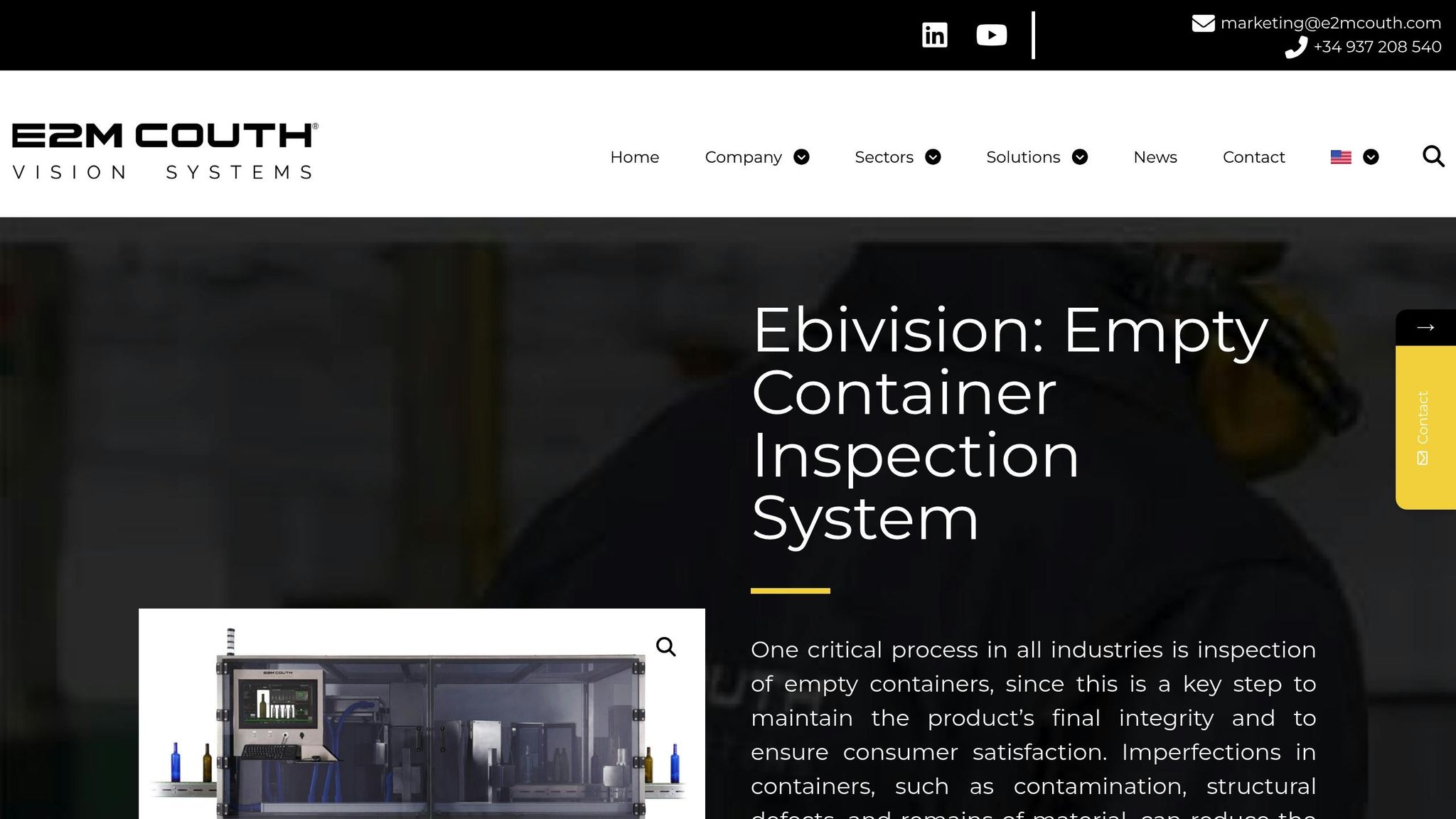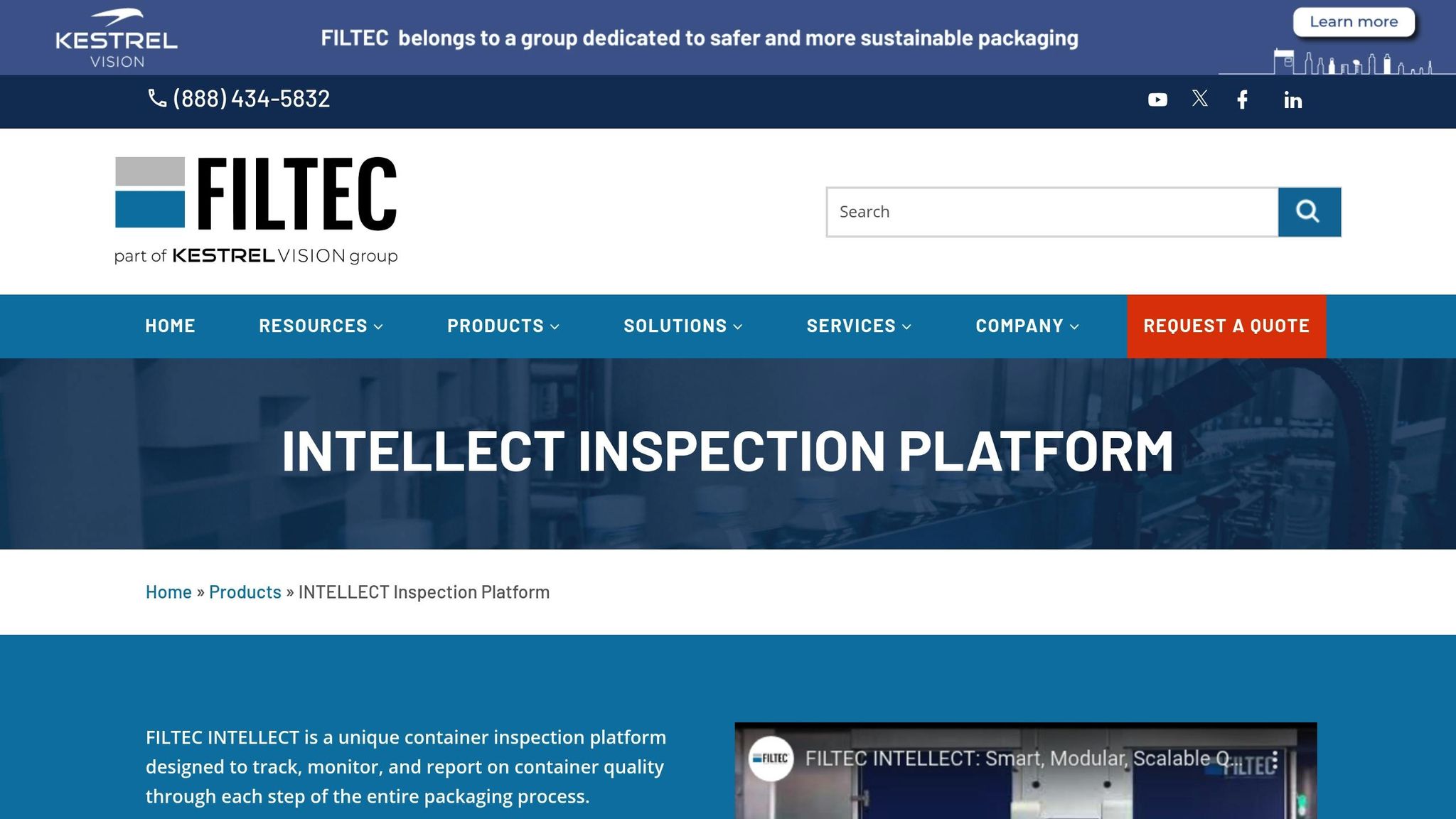Top 8 Trends in Beverage Container Inspection Technology
Beverage manufacturers are adopting smarter, faster, and more accurate inspection technologies to...
Empty Bottle Inspection (EBI) systems use advanced cameras and sensors to detect cracks, chips, or foreign objects in bottles before they’re filled. This ensures quality, reduces waste, prevents recalls, and protects your brand reputation.
With tools like FILTEC INTELLECT, you can monitor bottle quality in real-time, reduce false rejections, and keep production running smoothly.

Modern systems are designed to spot defects and ensure container quality with great precision.
Inspection systems use a mix of advanced tools like cameras, photon sensors, thermal imaging, and X-ray technology to thoroughly examine bottles:
FILTEC systems are a great example of these capabilities, inspecting every part of a bottle - base, sidewall, finish, and threads - at impressive speeds.
Selecting the right inspection system depends on several factors. Here's a quick breakdown:
| Production Factor | Key Considerations | Impact on System Choice |
|---|---|---|
| Container Material | Glass, PET, or Metal | Determines the sensors and methods used |
| Production Speed | Units per minute | Affects camera resolution and processing |
| Container Size | Height and diameter | Guides vision system setup and sensor placement |
| Quality Standards | Industry-specific requirements | Sets the minimum detection thresholds |
These considerations are critical in customizing systems for high-speed production lines.
The FILTEC INTELLECT system highlights how these technologies work in real-world settings. It offers:
Vision-based systems are especially effective for inspecting transparent containers. They can closely examine critical areas without slowing down production, uncovering subtle defects that older methods might miss.
For example, combining vision and photon technologies in fill-level management systems has shown outstanding accuracy in detecting improper fills. This directly reduces waste and ensures consistent product quality, making these systems a smart choice for modern production lines.
To implement bottle inspection systems, follow these three main phases: evaluation, setup, and integration.
Start by assessing the production area. Make sure there's enough space, proper lighting, steady power, a reliable network, minimal vibration, and controlled environmental conditions. Once the site is ready, move on to configuring and testing the system.
Connect the inspection system to your conveyor and production monitoring setup via Ethernet. This ensures smooth bottle handling and real-time tracking of quality data. Test the integration under regular production conditions to verify it can detect defects and reject faulty bottles effectively.
"FILTEC's INTELLECT platform is designed to track, monitor, and report on container quality throughout the packaging process."
After installation, fine-tune the system during its initial run to meet your specific production needs.
Position LED lights at angles that reduce glare and shadows. Keep the workspace conditions steady - control temperature, humidity, and vibration using anti-vibration mounts. Regularly clean to minimize dust buildup.
FILTEC's INTELLECT system offers calibration tools to cut down on false rejections. Start by determining a baseline rejection rate using verified test bottles. To boost detection accuracy:
Consistent monitoring and fine-tuning help maintain reliable performance over time.
Routine maintenance is crucial for dependable inspection results. Stick to this schedule:
Plan for professional maintenance periodically to avoid downtime and keep inspections running smoothly.
Here’s how to get the most out of your inspection system with practical strategies and effective use of FILTEC INTELLECT.

FILTEC INTELLECT acts as the core platform for managing quality assurance tasks. Operators can use it to:
A consistent quality check routine is essential for maintaining inspection accuracy. Here's a suggested schedule:
| Timing | Check Type | Actions Required |
|---|---|---|
| Start of Shift | Basic Verification | • Test good/bad samples • Confirm rejection mechanism • Align cameras |
| Every 4 Hours | Performance Review | • Check rejection stats • Monitor false reject rates • Clean inspection windows |
| End of Shift | System Analysis | • Save inspection data • Note any anomalies in system performance |
Proper training ensures your team can fully utilize FILTEC INTELLECT for quality assurance.
Here’s a quick look at the main steps for successfully implementing an empty bottle inspection system.
Use this checklist to guide each phase of the process:
| Phase | Actions | Outcomes |
|---|---|---|
| Planning | • Assess the site • Choose the system • Create a timeline |
All documentation ready |
| Installation | • Place equipment • Set up power/network • Configure INTELLECT |
System is up and running |
| Testing | • Inspect samples • Verify rejections • Optimize speed |
Testing criteria are met |
| Production | • Train staff • Set quality protocols • Monitor performance |
Quality goals are achieved |
| Maintenance | • Calibrate regularly • Update software • Clean components |
System stays in top shape |
An advanced empty bottle inspection system offers several production advantages:
Beverage manufacturers are adopting smarter, faster, and more accurate inspection technologies to...
In beverage and liquid products manufacturing, precision is...
Call us today! (888) 434-5832
Request a Quote (888) 434-5832
(888) 434-5832